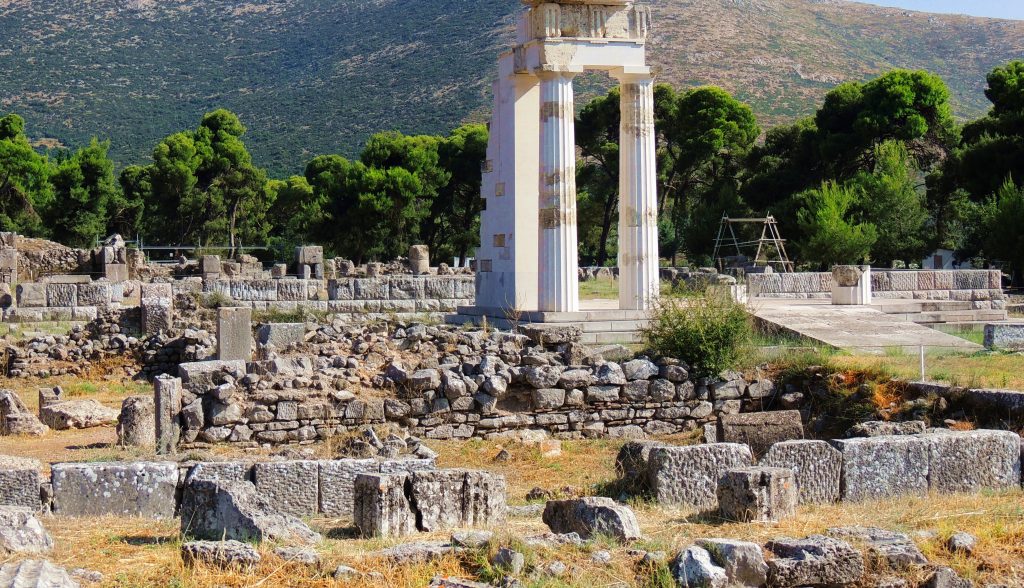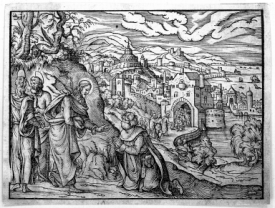

Introduction
When people fall ill they inevitably ask: ‘Why am I ill?’ and ‘How do I get better?’ Throughout history, the answers have been sought and provided through a mixture of natural, spiritual and moral meanings. People have rarely understood illness through just one of these components.
Using the Spirits to Cure Disease
In many ancient societies the spirits and gods were believed to make their presence known through disease. Treatment involved attempts to satisfy them with ritual chanting or sacrifice, though this was often combined with direct treatment of the sick person. In Egypt astrological explanations and advice sat alongside prescription of herbal medicines, or advice on diet and rest. In China a combination of drugs known as fang was prescribed to combat disease thought to be caused by angered spirits.
Explanations of Disease: Humours and Spirits
Ancient Greek physicians such as Hippocrates are famous for rejecting spiritual explanations of illness, seeing it instead as a natural imbalance of the four humours. Yet this was by no means the only explanation of illness in Greek society. For every elite healer who offered a natural explanation of disease, there were countless diviners and priests ready to offer a spiritual explanation. But these two explanations were not particularly distinct. The Hippocratic oath, the cornerstone of medicine, began with a plea to the gods – and many healers only prescribed medicine after invoking Asklepios, the god of healing.
Priests and Healers: A Combined Understanding of Illness

Understandings of illness based on nature and the gods continued to complement one another into the Middle Ages. In Christianity the marks and symptoms of disease were seen as divine punishment: each of the seven deadly sins had its own corresponding illness. It was common for individuals to examine their moral conduct to determine how they had brought illness upon themselves, and a priest as well as a healer would have been consulted (one man often fulfilled the two roles).
The Growth of Organized Religion
At the same time, the growth of medicine depended on the corresponding emergence and spread of organised religions. Christianity taught that the physical body had been corrupted after the expulsion of Adam and Eve from the Garden of Eden. Yet it also taught that the body belonged to God and had to be properly looked after.
Purity, Cleanliness, Hospitals, and Doctors in Judaism and Islam

The emphasis on purity and cleanliness in the Torah and the Qur’an ensured that personal care and hygiene were central to Judaism and Islam. By 400 CE, Jewish law refused to acknowledge a community that lacked a doctor. During the 800s and 900s CE, Islamic cities such as Baghdad and Cairo possessed the world’s most advanced hospitals, and Islamic scholars promoted formal medicine by translating and expanding on Galen’s work.
The Continued Belief in Spiritual Causes and Cures in Christianity and Islam
At the same time, spiritual explanations continued to be widely believed for centuries. The majority of Muslims still believed disease was caused by the spiritual jinn (‘genies’) and al-’ayn (‘evil eye’). They sought treatment from popular healers who prescribed herbal remedies and relied on charms and amulets to ward off spirits. Christians also continued to believe in spiritual causes and cures, despite the spread of Galenic medicine from Islamic countries. Ill individuals in medieval Europe generally also sought cures from popular healers such as wise women, who provided treatment based on the doctrine of signatures, believing that for every disease God sent he provided a cure in nature.
Doctors Using Spiritual Cures
The belief that God provided natural remedies underpinned more formal medical practice as well. Alchemy was pivotal to science and medicine, and was advocated by several high-profile doctors such as Paracelsus. Indeed, where practical means offered no cure, many doctors still recommended that patients carry amulets or offer prayers to the saint whose sufferings corresponded to their disease – such as St Apollonia, the patron saint of toothache.
England’s Belief in the Power of Prayer
Into the 1800s, belief in the healing power of prayer was in decline among an educated and relatively privileged minority. But the majority of the population continued to embrace it. Faced with terrible living and working conditions, they saw salvation in the prospect of a heavenly afterlife and believed in the healing power of prayer. The Prince of Wales’s recovery from typhoid in 1871 was widely thought to have resulted from nationwide prayers; the work of modern medicine was incidental by comparison.
Disease and Blame
Although today’s medical professionals no longer blame disease on spirits or divine wrath, there remain many groups whose illness might be blamed on lifestyle and conduct. Conditions such as lung cancer, obesity and AIDS have very different causes. Yet they have all been labelled at one time or another as illnesses which could be avoided with different behaviour, an example of the tendency to create scapegoats as a misguided means of coping with the fear of illness.
The Individual’s Belief in Treatments
Some medical research even claims that certain personalities contribute to a greater risk of developing cancer, and that recovery can be helped or hampered by the outlook of the person receiving treatment. This last claim is not new: it has long been argued that belief of some kind, whether it is in a god, medical science or alternative medicine, can contribute to recovery. Even Galen admitted his treatments worked best if his patients truly believed in them.
Getting Better by Believing: The Placebo Effect
Within biomedicine the role played by belief in healing is now discussed in terms of the placebo effect. Clinical trials rely on the fact that some people get better even if they are given a treatment which is not medically active.
So while the supernatural or spiritual origin of disease may no longer be widely accepted, medicine is always part of the belief systems of specific cultures and time periods, and is only one of many linked ways in which people encounter and explain disease.
Bibliography
- F Bray, ‘Chinese medicine’ in W F Bynum and R Porter (eds) Companion Encyclopedia of the History of Medicine (London: Routledge, 1993)
- L I Conrad, ‘Arab-Islamic medicine’ in W F Bynum and Roy Porter (eds) Companion Encyclopedia of the History of Medicine (London: Routledge, 1993)
- L I Conrad, M Neve, V Nutton and R Porter, The Western Medical Tradition, 800 BC – 1800 AD (Cambridge: Cambridge University Press, 1995)
- E Edelstein and L Edelstein, Asclepius: A Collection and Interpretation of the Testimonies (Baltimore: Johns Hopkins University Press, 1967)
- J Hinnells & R Porter (eds), Religion, Suffering and Healing (London: Kegan Paul, 1998)
- F James, ’Rainfall, Plagues and the Prince of Wales: A Chapter in the Conflict of Religion and Science’ Journal of British Studies, 13 (1974), pp 46-65
- M Last, ’Non-western concepts of disease’ in W F Bynum & R Porter (eds) Companion Encyclopaedia of the History of Medicine (London: Routledge, 1993)
- L T Olsen, ‘Charms and Prayers in Medieval Theory and Practice’ Social History of Medicine, 16 (2004), pp 343-366.
- K Thomas, Religion and the Decline of Magic: Studies in Popular Belief in Sixteenth and Seventeenth Century England (London: Penguin, 1991)
- B S Turner, ’Changing Concepts of Health and Illness’ in G L Albrecht, R Fitzpatrick and S C Scrimshaw (eds) The Handbook of Social Studies in Health and Medicine (London: Sage Publications, 2003)
- A Wear, Knowledge and Practice in English Medicine, 1500 – 1800 (Cambridge: Cambridge University Press, 2000)
Originally published by the Science Museum, republished for educational, non-commercial purposes.






